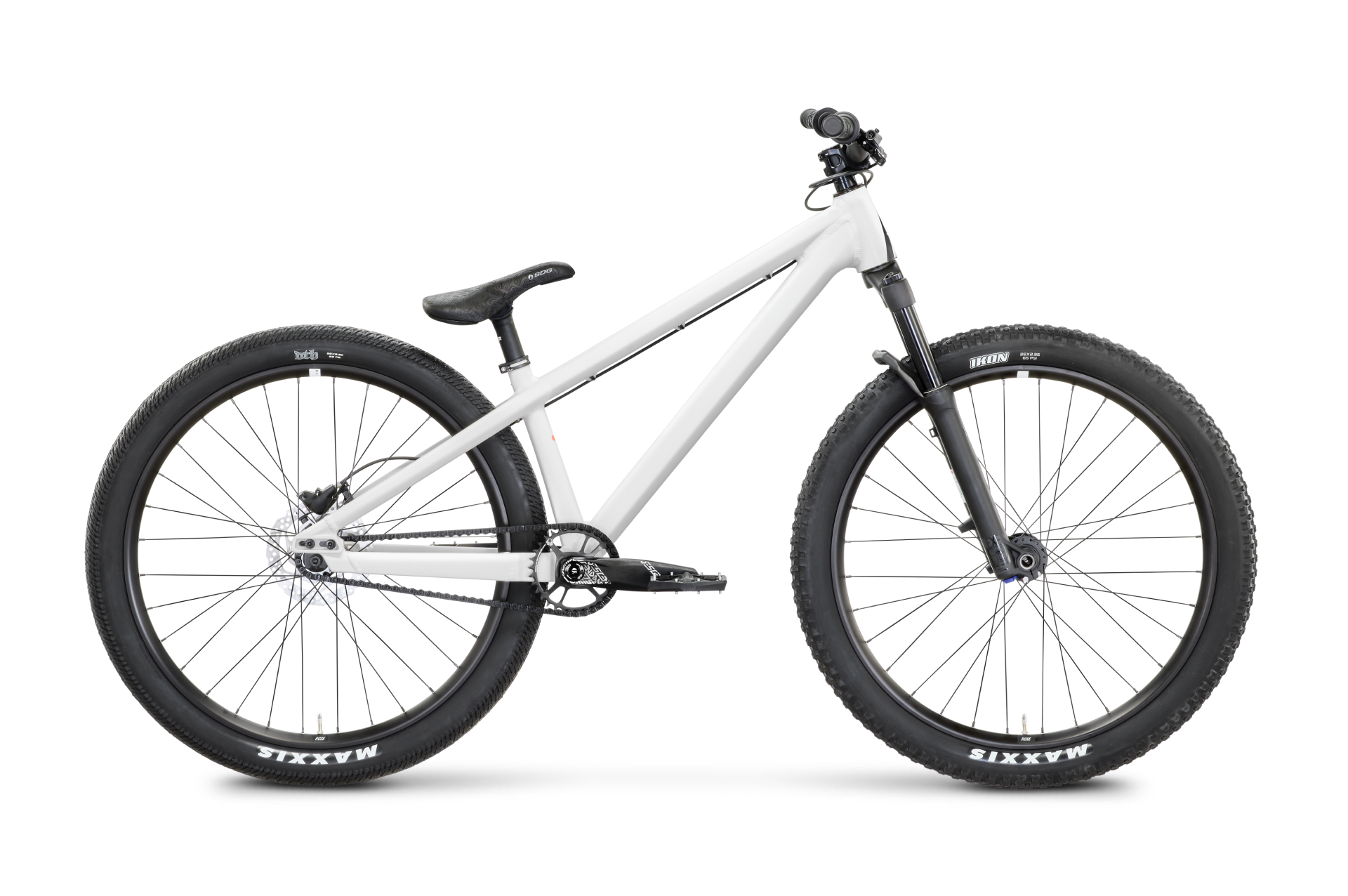Dirt
Dirt
Dirt bike Buyer’s Guide
FAQs
What is a dirt bike?
A dirt bike is a specialised mountain bike for jumps, tricks and fast manoeuvres on dirt jumps, pump tracks and in skate parks. It is characterised by a compact, robust frame, 26-inch wheels and minimalist equipment.
What is the difference between a dirt jump bike and a BMX?
While BMX bikes usually have 20-inch wheels and a rigid fork, dirt bikes use larger 26-inch wheels and often a suspension fork. Dirt jump bikes are also more stable and designed for bigger jumps, while BMX bikes are better for technical tricks and tight ramps.
Why don't dirt bikes have gears?
Dirt bikes are usually single-speed, as gears would cause unnecessary weight, maintenance and potential defects during hard landings.
Which wheel size is ideal for a dirt jump bike?
The tried and tested standard size is 26 inches, as it offers the best mix of agility, stability and control.
Which brakes are recommended for a dirt jump bike?
- Hydraulic disc brakes offer more braking power and control.
- Most dirt bikes only have a rear brake with a particularly long brake hose to facilitate tricks such as bar spins.
Which tyres are suitable for dirt jump bikes?
- Smoother tyres with low tread for skate parks and hard dirt tracks.
- Grippy tyres with side lugs for softer or sandy ground.
- Air pressure: 3.5-5 bar, depending on the surface and individual preference.
Which suspension fork should a dirt bike have?
Dirt jump bikes use short-travel suspension forks with 100 mm travel to cushion hard landings without absorbing too much energy.
Can I also ride a dirt bike off-road?
Dirt jump bikes are not designed for long trails or steep descents. They have no gears and less suspension, which is why an enduro or trail bike is better suited for off-road riding.
Is a dirt bike suitable for beginners?
Yes! Dirt jump bikes are robust, low-maintenance and easy to control. Beginners can gain their first experience on pump tracks before attempting bigger jumps.
)
)
)
)
)
)